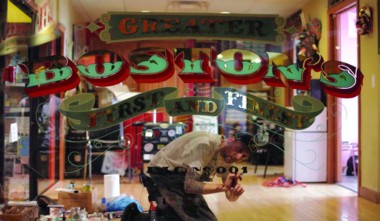As I sit down to write this column each week, I’m constantly amazed at the richness of our Valley’s film scene. After logging over a half a decade in print, I’d be hard pressed to remember a single instance when I struggled to find something interesting to cover—between the theaters of every size and stripe, community film events, and college screenings, I have rarely been at a loss for a compelling subject. We love our film here. But even someone who works in that world—and from popcorn to projection to print, I’ve done it—can still be surprised by its passion.
So it is this week that a screening of Gianni Di Gregorio’s 2008 film Mid-August Lunch caught my eye. Showing this Sunday and Thursday at Amherst Cinema, the film serves as the capper to the theater’s recent Italian Film Series. That series was made possible by the generosity of Amherst residents Fred and Edith Byron; essentially, they were the ones to foot the bill. If you’re looking for proof of how much the Valley likes their film, it doesn’t get much better.
The film itself—Di Gregorio’s directing debut—grew out of an incident in the director’s life. Behind on his condo payments, he was offered a deal by the building manager: watch after the manager’s mother during Italy’s biggest holiday, and the debt would be forgiven. Di Gregorio rebuffed the offer, but the thought “What if?” was enough to birth a film. The result is a particularly Italian story, about mothers, a kitchen table and wine, and the undeniable vitality born of a richly lived life. Enjoy it, and tip your hat to the Byrons on the way out.
Of course, not every film finds its way to the big screen. Luckily, we live in an area where many of the best do, thanks to places like Amherst Cinema, and, in the decades before it, Pleasant Street Theater.
I was lucky enough to work with Pleasant Street founder Richard Pini (and later owner Bob Lawton) for many years, and saw firsthand the importance of having a curatorial eye. In an era before video, and long before the Internet, Pini’s professorial way—he had come from France to teach at Amherst College—proved to be a great asset for the Valley’s burgeoning film scene. Separating the wheat from the chaff was Richard’s great joy. Now it’s mine.
Nearly two decades after I began at PST, the world of film has changed quite a bit. Happily, thanks to technological advances that have made making movies cheaper, there are more great films out there than ever before; more, in fact, than most of us could ever see in a lifetime. But if they don’t make it to a regular theater (and many won’t), that doesn’t make them unavailable. They’re just in different places now: Netflix, Amazon Instant, Hulu, iTunes, Vimeo, and many other sites online. Some require a subscription, while others are pay as you go; still others offer so much free content (legally!) that you may never feel the need to pay for your movie fix.
The point is, a heck of a lot of our movie watching these days isn’t happening in theater seats, and this column should reflect that. Beginning this week, it will: while local film will still be—and will always be—CinemaDope’s main focus, I’ll also be looking for those hidden gems you might only find through a streaming service, and will be bringing you details about those films and where you can see them—separating the wheat from the chaff. Frequently, those films will relate to local offerings. Let’s get started by highlighting a couple of films that deal with a subject close to any writer’s heart: lettering.
Sign Painters, available for rental on iTunes or at signpaintersfilm.com, is Faythe Levine and Sam Macon’s documentary (there is a companion book as well) about the not-quite-lost art of hand-painted signage. You’ve probably seen the faded remnants of the art’s heyday on the side of a building somewhere; faded, peeling letters that you can’t quite make out anymore, advertising some product that you never knew.
It used to be that sign painters could lay claim to every storefront in town, and more than that: early Hollywood called on sign painters to letter their credit sequences and title cards in an era before digital type. Today, the future of the hand-painted sign is uncertain, but should it fade away, it will leave a well-deserved mark with Levine and Macon’s film.
Another remarkable documentary about letterforms is Gary Hustwit’s film Helvetica, available from Netflix and others. While it takes its name and point of focus from the mid-century Swiss typeface, its larger purpose is to examine the ways in which typography has affected our lives in a modern, visual world filled to the brim with signage. Designed in the late 1950s by Max Miedinger with Edüard Hoffmann, Helvetica exploded in the world of corporate branding and advertising, where its clean, strong lines imparted a clarity to an increasingly busy world. If you already hold an interest in type, Hustwit’s film offers a wealth of insight into what make Helvetica such a standard. If you’ve never heard the name, you might be shocked to realize just how many times you see it every day.
In the end, CinemaDope’s mission is about supporting not just local film, but also local filmgoers. And sometimes, even with the embarrassment of riches that is our local luxury, there are some films that simply can’t make it to our bigger screens. From now on, you’ll know about them—I hope you’ll seek them out.•
Jack Brown can be reached at cinemadope@gmail.com.



